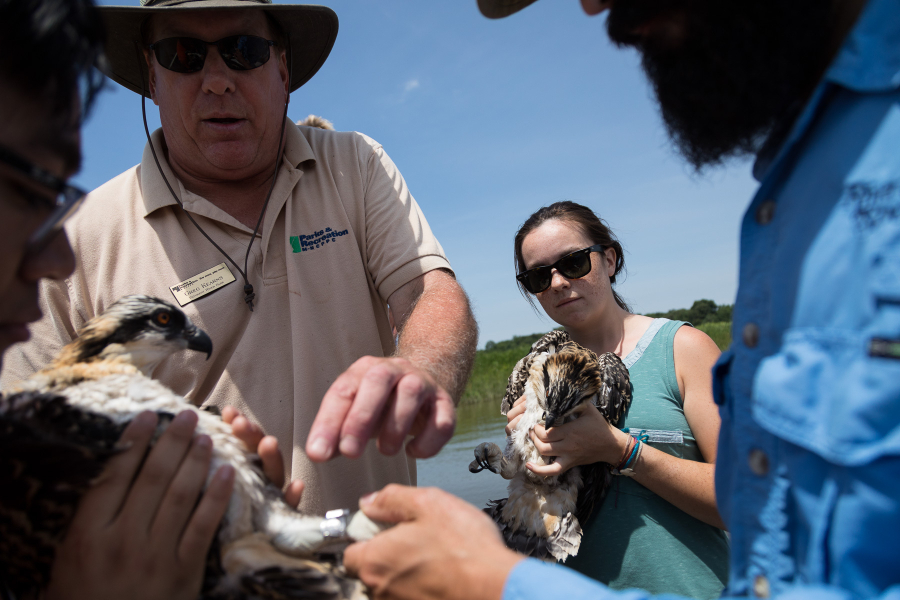Osprey banding not just for the birds
Tracking bands helps researchers study health of migratory birds

Greg Kearns, a naturalist at Patuxent River Park in Prince George’s County, Maryland, reads the numbers on a newly-banded osprey during a tour of the river on Thursday, June 29. Members of the public were able to handle osprey and participate in the banding process, which helps researchers monitor the species.
During banding, birds are fitted with an aluminum ring around one leg—25 standard sizes and five specialty sizes mean bands can fit on anything from the large tundra swan to the tiny ruby-throated hummingbird. Each band is stamped with a unique eight or nine digit number, allowing researchers to track the movement and behavior of individual birds.
Banding data from across the country is sent to the Bird Banding Laboratory, housed at the Patuxent Wildlife Research Center in Laurel, Maryland. More than 1.2 million banding records are send to the Bird Banding Laboratory each year, helping scientists understand migration patterns, population dynamics, sources of mortality and how long birds live. Much of the critical information known about birds like osprey comes from tracking and reporting banding data.
Not everyone can band a bird: to protect the safety and health of migrating birds, bird banding is strictly controlled and limited to trained, permitted professionals whose projects aid in bird conservation and management. However, anyone is welcome to report a banded bird. If you come across a banded bird, report the band number at www.reportband.gov or 1-800-327-BAND along with where, when and how you found it.
Learn more about osprey, or get a behind-the-scenes look at bird banding on the Chesapeake Bay’s Eastern Shore.

Comments
What resources are available to have the state/ DNR build an osprey nest on or near my property?
BGE tore down a nesting osprey couple's nest on a utility pole and placed a preventative pipe to keep them from building a new nest.
I have watched the couple raise two generations of young over the past two years until they tore down the nest this winter/fall.
The osprey just returned this week 03.17.2018 and are remaining in the immediate area but have few options of where to build another nest. We don't want the couple to leave the area and would like to try and have some type of nest area/pole built...can someone please offer assistance or guidance?
Thank you!
Your comment has been received. Before it can be published, the comment will be reviewed by our team to ensure it adheres with our rules of engagement.
Back to recent stories